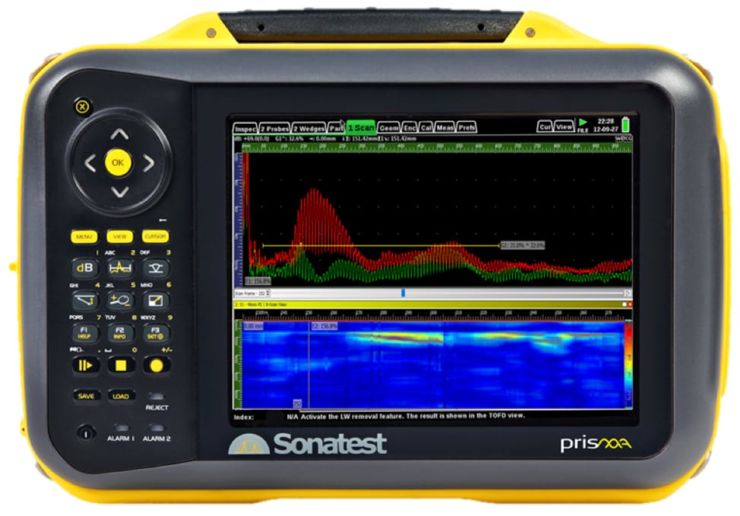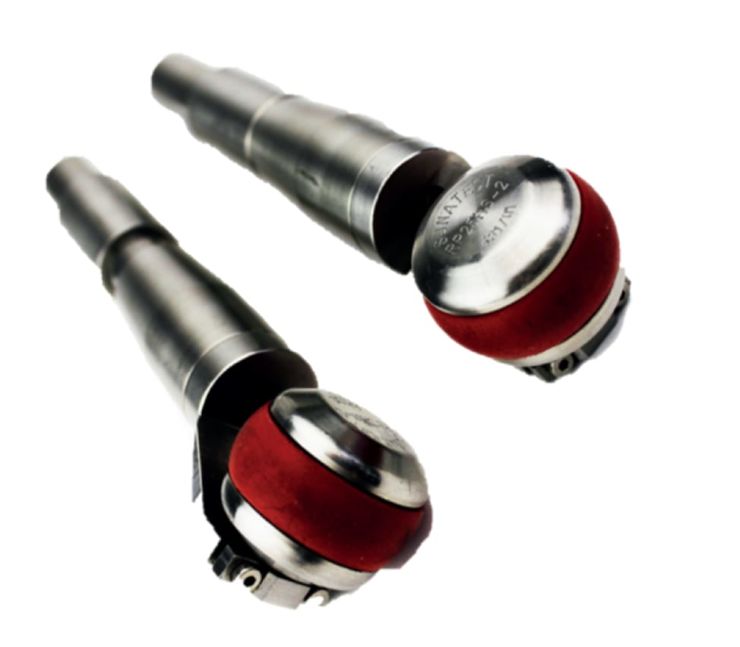Roller Probe Inspection
The through transmission inspection technique is a widely accepted method for honeycomb assessments.
Dry-Scanning Using Roller Probes and Prisma
The through transmission inspection technique is a widely accepted method for assessment of composite honeycomb or foam core structures. This technique requires both surfaces to be accessible and the use of an instrument with C-scan capabilities. The Sonatest rolling tip probe has a special design with a circular emitting crystal. The pulsing (TX) and receiving (RX) probes need to be precisely positioned in front of each other and across the part to properly carry out the inspection. A fixture to hold the part may also help to facilitate probe alignment although the rolling tips make it easier to scan. The very low probe frequency enables dry inspections, which eliminate the need for water coupling. In addition, the probe is highly sensitive, which, combined with the high-quality signal provided by Sonatest instruments, enables complete and accurate inspections, even on foam core composite air-like structures.
The main advantages of this technique:
This technique ensures lower sound attenuation, mitigates dead zones, reduces recovery time and lowers sensitivity with respect to flaw orientation.
|
|
|
|
Recommended Package
| Category | Part Number | Description |
|---|---|---|
| Product |
PRISMA UT BNC* KIT or PRISMA UT LEMO KIT |
Standard base model; no option required to drive Dryscan probe: Prisma UT BNC Standard Kit or Prisma UT LEMO Standard Kit |
| Probe | RP25HS-1 | 1.25 MHz roller probe and 10 mm wide |
| Cable | 152087 or 152088 |
Twin Transducer Cable TPC-BZ (BNC to Lemo 00) or Twin Transducer Cable TPC-LZ (Lemo 1 to Lemo 00) |
* It is also possible to use the Veo+ and RSflite.
|
|
|
|

